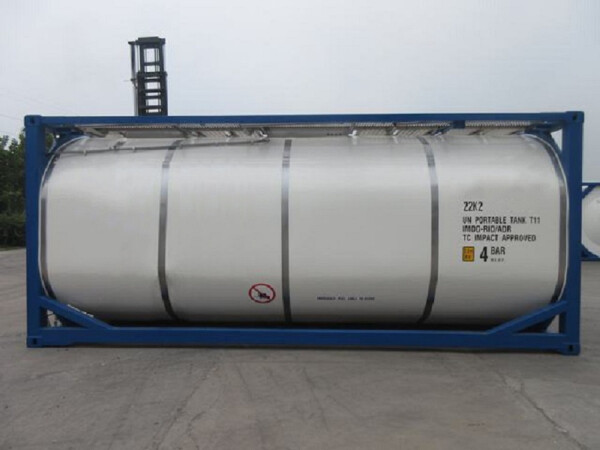
Specifications
About our 23ft new build swap body
The Swap tank has more capacity than a regular 20FT ISO tank. The protruding sides of the barrel make it possible to store 30,000-35,000 liters of liquid in the Swap tank. The frame of the Swap ISO tank is 23FT, but the connection points of the frame sit in the same place as a 20FT frame. This Swap-Body tank is very suitable for transport per train and truck. Tanks are available with and without baffles and can be customized by Meeberg with various modifications.
Specifications:
Insulated
Steam heated
Remote airline
Spillbox covers
12 runs of steam
Full walkway
Handrail
The bulk liquids that can be transported in an ISO tank include:
Hydrogen Peroxide
Sulphuric Acid
Nitric Acid
Mining chemicals
Food Products
Solvents
Oils
Resins
Alcoholic Beverages
Not all products match every swap body tank. Please ask our sales manager for advice on which product fits which tank container.
Certifications
At Meeberg ISO Tanks & Containers, we ensure all our new & second hand tank containers are delivered with certifications from leading organizations such as Lloyd's Register (LR), American Bureau of Shipping (ABS), Bureau Veritas (BV) and SGS. This guarantees the highest standards of safety, quality, and reliability for your operations.
We offer the following types of certifications for our clients:
2.5-Year Test for ISO Tank Containers
The 2.5-year test, also known as the intermediate inspection, is a crucial part of maintaining ISO tank containers. Conducted halfway through the 5-year certification period, this test ensures that the tank remains in safe and operable condition.Key aspects of the 2.5-year test include:
Visual Inspection: A thorough visual check of the tank's exterior and interior surfaces to identify any signs of wear, corrosion, or damage.
Leak Test: Conducting a leak test to ensure the tank's integrity and that there are no leaks that could compromise safety.
Valve and Gasket Checks: Inspecting all valves and gaskets for functionality and integrity, replacing any that are worn or damaged.
Structural Integrity Assessment: Verifying that the frame and overall structure of the tank meet the required safety standards.
5-Year Test for ISO Tank Containers
This test is more extensive than the intermediate 2.5-year test and involves a detailed assessment of the tank's condition and performance.Key aspects of the 5-year test include:
Internal and External Inspection: A thorough examination of both the interior and exterior surfaces of the tank to identify any corrosion, wear, or damage that could affect the tank’s integrity.
Hydrostatic Pressure Test: This test involves filling the tank with water and pressurizing it to check for leaks and ensure the tank can withstand its maximum working pressure without any issues.
Ultrasonic Thickness Testing: Measures wall thickness to ensure structural integrity.
Valve and Fitting Inspection: Checking all valves, fittings, and seals to ensure they are in good working condition.
Frame and Structural Assessment: Verifies compliance with ISO and CSC standards.
Documentation and Certification: Updating the tank’s certification to reflect that it has passed the 5-year test, ensuring it is compliant with relevant international standards such as IMDG, ADR, RID, and CFR 49.
CSC Test for ISO Tank Containers
The CSC (International Convention for Safe Containers) test ensures ISO tank containers meet international safety standards for transport. Key aspects include:
Structural Integrity Inspection: Checking the frame and structural components for strength and stability.
Safety and Security Checks: Ensuring all locking mechanisms and securing devices are functional.
Identification and Marking Verification: Confirming the presence and legibility of the CSC plate and other required labels.
Dimensional Accuracy: Ensuring the container meets ISO dimensional standards.
Damage and Wear Assessment: Identifying any signs of damage or corrosion.
Maintenance Record Review: Checking that maintenance and previous inspections are documented.




